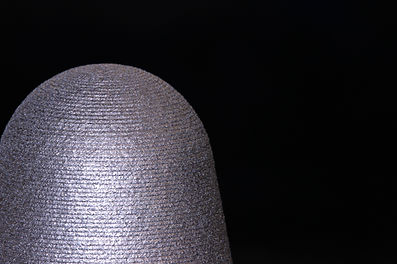Industrial Applications
Endlas Performance
Endlas Capabilities
Endlas Performance
Industrial Applications
Endlas Performance
Endlas Capabilities
Endlas Performance
Endlas Performance
Endlas Capabilities
Endlas Performance
Endlas Performance
Endlas Capabilities
Endlas Performance
Endlas Performance
Endlas Capabilities
Endlas Capabilities
Endlas Capabilities
Endlas Capabilities
Redefining Material Possibilities

Laser Cladding
Why is Endlas LC Laser Clad the Solution to Your Problem?
-
Full Metallurgical Bond with Base Material
-
Optimum and Consistent Clad Thickness
-
Precise Design Tolerances and Dimensions
-
Crack Free Hard Facing
-
Advanced QA/QC with Vision Metrology


What is the laser cladding process?
Metallic and/or composite powder used in laser cladding is injected into the system by inert gas stream through lateral nozzles directed toward the interaction zone between the laser beam and work-piece. The powder and work-piece are melted creating a fully-dense coating with a strong metallurgical bond. Motion of the processing head and/or work-piece is achieved by robotics and guided by CAD/CAM, increasing precision and repeatability of the process. The short exposure time and rapid solidification rate produces solid coatings with minimal work-piece heat affect. Deposition speed and path-plan determines the melt pool cooling rate and depth of heat affect, which allows for precise control of clad and work-piece microstructure. A simplified process diagram for laser cladding is shown to the left.
Laser cladding is a process using a focused, high-powered, laser to melt filler material onto the surface of a metal work piece. Our laser clad coatings utilize micron-sized metal powders, which are deposited with a single layer thickness range of 0.01 inches to 0.1 inches. Single layers can be stacked to achieve greater clad thickness, and can be used to functionally grade and/or 3D print. Laser cladding uses a precise heat source capable of producing clean, dense, and well bonded clad layers with significantly less heat affect than traditional technologies like arc welding. The laser heat source also allows for cladding with novel materials, which in many ways outperform traditional materials. --> Learn More
Due to superior focus-ability, lasers maintain power densities not typically possible with conventional thermal procedures, allowing us to process components with minimal thermal loading and distortion. Laser cladding is particularly suitable for applications demanding high dimensional accuracy. Hard-surfacing and cladding are widely used to improve wear and corrosion resistance, along with strength of metal parts.
Any shape, Any Application
Our use of robotic automation ensures quality control and repeatability for complex one-off components, and long term production runs. A high degree of accuracy affords us the ability to produce localized coatings which extend the operational service life of components and systems by increasing resistance to wear, corrosion, erosion, and friction, all in a wide variety of applications and environments. Our ID cladding tooling allows us to coat cylinders with diameters as small as 2.5 inches with lengths up to 36 inches.
Want to learn more about our internal cladding process? Contact us



Re-manufacturing: reuse material, waste less material
Traditional methods of re-manufacturing dies and molds suffering from heavy wear creates a tremendous burden on overhead costs. Using an additive manufacturing approach, you can save on labor, energy, material, overhead, and capital costs. By re-manufacturing, you can recoup 85% to 90% of the energy and materials in the rebuilt components. Incorporating re-manufacturing to your workflow can significantly reduce the demand for energy and material resources in the near and long terms. Re-manufacturing is also an environmentally and financially green technology, lengthening the time that products stay out of the waste stream, thereby reducing pollution while saving money.
Contact us today to find out how to save time, money, and materials through re-manufacturing.
